Astronomy Binoculars - Your First and Second Choices
MenuWhy do people even consider astronomy binoculars? When first getting interested in astronomy or searching for a gift for a young person, don't we usually ask "What kind of telescope shall I buy?" Of course, there are many different kinds of telescopes available from sources such as discount, hobby and department stores and usually each promises extraordinary celestial views.
We'll start out here with more basic considerations and move to more advanced material lower on the page. If you'd prefer to skip some portions of the page, you'll find the following sections available:
Observing total solar eclipse with 25X100 binocular.
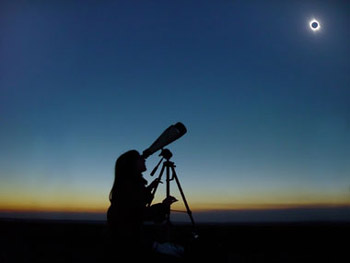
- Important General Optics Information
- Best Astronomy Binocular Configurations
- Evaluating Binoculars for Astronomy
- Advanced Binoculars for Astronomy
- Zoom Binoculars
- Image Stabilized Binoculars for Astronomy
Our first thoughts are that the interests of someone wanting to view the heavens, will likely be best served by starting out with a pair of binoculars. Why would this be true?
Binoculars are much easier to learn to use than a telescope. It's a little like comparing a point-and-shoot camera to the type used by professional photographers. You intuitively "point" the binoculars at what you wish to see and look through them. This intuitive "pointing" makes it significantly easier to find objects and subsequently move from one celestial object to the next. It's easier, using binoculars, to learn the locations of planets, constellations, galaxys, and clusters and observe their orderly movements — thus establishing the foundation for greater understanding.
Focusing a binocular, whether it's a model with a center-focus mechanism or the eyepieces focus individually, is also easier than a telescope. Even when using a tripod to support a larger, heavier binocular it will be easier and faster to set it up and start using it in the evening than the typical telescope.
Yet another reason binoculars are excellent for beginning astronomers is that using two eyes is quite simply better than using one. Not only does it help when finding objects, but using two eyes with Porro prism binoculars will provide a stunningly beautiful three-dimensional effect that is much more interesting and, yes, exciting than the flat, one-dimensional view typically seen through a telescope. Not only is the depth of the view noteworthy, but the width as well. You can find astronomy binoculars with 5-6° field of view while most telescopes are limited to a 1° view even at their lowest magnification.
If you think that you're more interested in optimizing your optical performance and not worrying about the view's beauty, consider that study after study has shown that using both eyes to view heavenly objects increases the image contrast, resolution, and our eyes' low-light sensitivity by as much as 40%.
Further, although it may be quite different from what you'll hear if you shop for a telescope at a camera or department store, a binocular's magnification level also reinforces the concept that sometimes an astronomer is best served with a very low magnification in a telescope.
Finally, what will you do with a telescope if you decide that astronomy is not as interesting as you initially imagined it would be? With good astronomy binoculars, you're not limited to using them just for astronomy and so you're off and using them for a multitude of non-astronomy purposes.
In light of the foregoing, is it any wonder that binoculars are well recommended for astronomy beginners?!? In typical conversation with astronomers, the term "astronomy binoculars" is applied to those binoculars with 60mm diameter or larger objective lenses. For convenience, however, we're going to use that term for any binoculars used for astronomy.
Important General Optics Information
If you're brand new to optics in general, including astronomy optics, you'll also want to stop by our page about How to Buy Binoculars which walks a person through various criteria in choosing a binocular (this link takes you directly to the criteria). The various items, such as field of view, what kind of prism glass, the importance of coatings, objective sizes, how exit pupils and eye relief affect your experience, and so on there will be just as important to your enjoyment of the heavens as what you'll find here. Others have said they found the most benefit by using these two pages together.
Best Astronomy Binocular Configurations
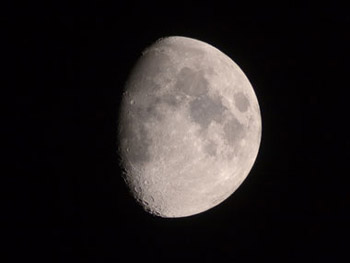
Although perhaps not familiar with the Navy study behind it, many know about the 7X50 binocular configuration having been used by the military for low light conditions. What are the best astronomy binoculars? The best astronomy binoculars for beginners will doubtless be the general purpose 7X50 to 10X50 configurations. They're the most popular "small" astronomy binoculars and for a good reason! To start with, they're about the largest that can comfortably be held by hand for the extended periods often encountered by stargazers. They also provide an excellent field of view and will gather all the light you want for the size, since larger objective lenses make a binocular significantly heavier. If these are for a youthful face, you'll want to ensure that you choose an instrument that has an appropriate interpupillary distance. You'll also want to consider the binocular's weight and the strength of the person who will be using it. Star watchers usually hold binoculars up to their eyes for longer periods than bird watchers do!
Having said that, if you already have a good quality 8X25 binocular do you need to get an 8X50 right away? Not at all! Use your present binocular for several clear, dark nights to get a feel for the nighttime sky. You'll be amazed at the difference a clear, dark night makes in what you can see as opposed to a night when you have nearly enough moonlight to read a newspaper. Then see if you can find a friend with a 50mm binocular who will let you look through it. It won't surprise us at all if, after a trial run, you decide to go ahead and get a good binocular with 50mm objective lenses.
Share Your Astronomy Stories
About Using Binoculars
Different people have different experiences. Your stories about using astronomy binoculars can help, inspire, and sometimes amuse others! Click here to share your wisdom, tips, or advice.
Binoculars are tools and, just as you wouldn't get far using a Phillips screwdriver on a slotted screw, you'll want to match the binocular to its task. The astronomy binoculars with 60mm diameter objective lenses or larger will be appropriate to consider for your next astronomical binoculars. First, most star watchers want to have a basis for evaluating their binoculars so we'll stop long enough to consider how to do that.
Evaluating Binoculars for Astronomy
While astronomy binoculars can be evaluated during the day, an even better test of quality optics comes after the sun goes down and you have an opportunity to view the nighttime sky. (We may as well be the ones to tell you if you didn't already know!)
If you're fortunate enough to live where there is a nominal amount of light pollution or less, first train your binoculars on the Moon so you see it in the center of your field of view and see what the edges of it look like. If you can't see the entire Moon within the center of your field of view, get its edge right in the middle since all optics tend to soften images at the periphery of their viewing area. Many binoculars, including some expensive ones, will show either a complete halo of one or more colors or color fringes on opposing sides. This is chromatic aberration. It usually evidences itself when viewing a bright object against a dark background or vice versa. What's desirable is to see only the object - without the extra, colored fringes.
The second thing you'll want to do is to focus on a bright star. Ideal astronomy binoculars will show it as a well-defined pinpoint of light with two or three concentric rings of light. In a binocular of average quality, it will not be sharply defined. To say it differently, it will be a bit fuzzy. A binocular of poor quality will show it as a fuzzy-edged pyramid or other odd shape. There are not many binoculars which achieve the ideal!
Have you just purchased a binocular and you're finding it has shortcomings you'd rather not live with? Hopefully you purchased from a retailer who offers a 30-day evaluation and return period. You'll find some of the online retailers offer a 30-day evaluation and return period which can make a difference in how satisfying you find your new purchase.
Advanced Binoculars for Astronomy
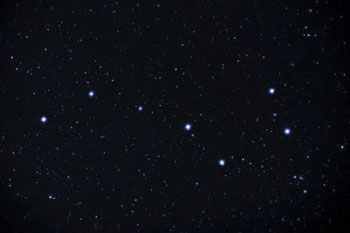
After you've had a chance to enjoy your beginning astronomy binoculars and decided you'd like to see even deeper into the nighttime heavens surrounding our globe, it's time to think about how your second binocular can best serve your interests. The next best binoculars for astronomy will be ones which will allow you to see objects further away from our planet.
Now's the time to seriously consider those "giant" astronomy binoculars you've been eyeing avariciously. They have the larger objective lenses to gather more light and make it possible for you to view objects that are much less bright than the ones you've been viewing so far. It's an exciting step!
Many find that they really like astronomy binoculars with 70 or 80mm or more diameter objectives. Choosing a magnification of 20X or more will allow you to see significantly more than you did with your initial, smaller astronomy binoculars. You'll find that using the two binoculars together will produce benefits in finding objects quickly with the smaller handheld binoculars and then using the tripod-mounted larger model for your studied review of the object. You will have already gotten locations of favorite views in mind and seeing them through the larger, more powerful instrument is a natural progression.
The most popular configurations for the giant astronomy binoculars use 80mm or 100mm objective lenses and range from 11X to 30X. Prices for these binoculars are typically more than the smaller binoculars, although good values can be obtained.
For careful budgeters, we recommend Oberwerk's 20X80 Deluxe II and 25X100 individual focus models which provide good values for their prices. If your budget is flexible, there are many fine, giant binoculars that will provide very good value for their purchase prices. We plan ongoing reviews of astronomy binoculars as OpticsReviewer.com grows, so please check back from time to time as your astronomy interests evolve!
Is there a best binocular for astronomy? We could point you to one of the best in the Fujinon 25X150 MT or it's sibling with 40X magnification. They both have terrific optics, but neither will do any good if it's not used. Your OpticsReviewer proposes that, aside from ensuring you have fundamentally good optics in good housings, the best astronomy binoculars are the ones that are used and help a person to learn more about the celestial bodies around this globe.
Along with the larger objective lens comes more weight and the need for support - usually a tripod as noted above. You may simply go with what is most convenient to purchase for your first tripod, but wooden ones are typically preferred because they help to dampen vibrations which would otherwise be transmitted to the instrument. Is the type of tripod of tremendous importance? It certainly isn't at first, at least to our way of thinking.
For most binoculars with 80mm or 100mm objective lenses, however, a tripod as typically used for light cameras for instance, will not be strong enough to hold a binocular weighing between 5 and 10 or more pounds (2.25 to 4.5+ kg). We're the kind of folks who figure we're likely to get an even heavier instrument later on, so we'll get a good, heavy-duty tripod to start with. That's just us, though, and you certainly don't NEED to get anything above and beyond what will serve your immediate needs! Just be sure the tripod you use for your giant astronomy binoculars won't collapse with resultant damage to your instrument!
One thing you'll need to think about is how to attach your big astronomy binoculars to your tripod. Most binoculars are fitted with a standard size threaded socket and are ready to accept a tripod adapter. After unscrewing the hinge cap on the end of the hinge nearest the objective lenses, screw the adapter into the hinge socket, tighten it, and mount the other end of the adapter on the tripod's pan head. When selecting a binocular tripod adapter, you'll want one whose screw's knob will work equally well with roof and Porro prism designs as well as the tight space on some larger binoculars. We like the knob design on the Vortex tripod adapter because its slender shape allows it to be used with nearly any binocular.
Zoom Binoculars
Let's take just a moment to consider getting astronomy binoculars with zoom optics at this point. You're probably normal and about now you're thinking that getting zoom optics would be especially intelligent when considering astronomy. Zoom binoculars can seem like an astute purchase due to a perceived greater utility. The popularity of zoom configurations is largely based on the range of magnifications available in on instrument. Unfortunately, the very aspect that makes it seemingly attractive can also work against it optically. You can learn more about the optical considerations in choosing zoom binoculars on the How to Buy Binoculars page (this link takes you directly to the section on zoom optics).
Image Stabilized Binoculars for Astronomy
Pleiades (M45)
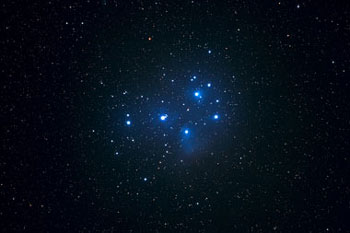
If you've looked through a hand-held high-magnification astronomy binocular (let's say 12X or above) and tried to read a sign on which the writing appears small in the distance, you'll know how difficult it is to hold the binocular steady. Even when you've braced your arms on a flat surface or against a tree, the simple act of breathing can make the image move enough to keep a person from reading easily!
Image stabilized binoculars are those with a compensating mechanism which adjusts many times per second, usually in conjunction with electronics, to eliminate most movements in the image you view. While the compensating mechanism may vary between brand names, the concept of stabilizing the view remains constant and amazes those who've not previously experienced it. Naturally, the compensating mechanism, electronics and batteries all add weight to the binocular. The benefits, however, outweigh the costs to the extent that these binoculars are rapidly gaining in popularity. It's up to you to decide whether these types of optics qualify as "best binoculars for astronomy." They're quite nice, but they're not essential to enjoying the celestial sites.
Let's have a brief word about why stabilization is of interest before discussing the differences in mechanics and their results. The stabilized image will allow you to actually see not only subtle differences in color hues, but also where they start and end. If your binocular's optics (without image stabilization) would otherwise allow you to see them, the tiny movements of your hands caused by things so innocuous as your heart's rhythmic beating or breathing will usually blur these fine details. Consequently, the detailed image afforded by stabilized binoculars is much better than that typically seen in non-stabilized instruments.
For the mechanics, Fujinon was the first company to have developed stabilization with high-speed gyroscopes and they brought this feature to market as the "Stabiscope" in 1980 with a 14X binocular. The design was improved and the Techno Stabi introduced in 1999 at price points that make it competitive with the Canon offerings. This stabilization approach works particularly well in adjusting for large movements, such as experienced with vessels on water, but also does admirably with smaller movements. Fujinon optics have earned their reputation for excellence and provide an above average crisp, clean, and bright viewing experience.
Perseid Meteors and the Milky Way
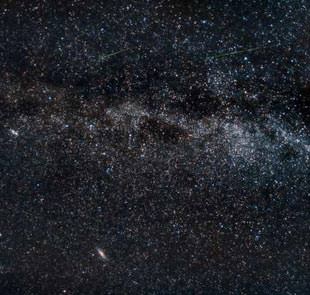
Zeiss brought a 20X binocular to market in 1990 which utilized an entirely mechanical "dampened stabilization mechanism." That is to say it has no electronic component to the stabilization and thus no batteries to replace. This approach, while doing wonderfully in its own right, doesn't seem to stabilize as thoroughly as the Techno Stabi, but is still quite good when considering that it has more dampening to accomplish at 20X than lower magnification powers. Some reviewers say that they consider the vibration in the stabilized Zeiss 20X60s is about what you'd expect from a 4X binocular or about half what you'd experience with a non-stabilized 7X50. Did we mention that there are no batteries to die just as you see a particularly astounding view?
Most believe that Canon was the first company to have image stabilized binoculars due to very good marketing and bringing the price down to within reach of the consuming public, even if it's a long reach! Their introduction in 1997 was based on the work they had done for years in stabilizing video camera images. It quickly caught on and image stabilized Canon binoculars have many devotees. While the Canon technology doesn't seem designed to stabilize the larger movements encountered on boats/ships, speeding cars/trucks, and airplanes/helicopters, it does well with hand movements such as those often associated with health and age. The engagement of the stabilization mechanism and electronics is said to often result in a somewhat softer image which lacks the crispness found in Fujinons. We anticipate publishing a review of the Canon image stabilized binoculars.
Orion
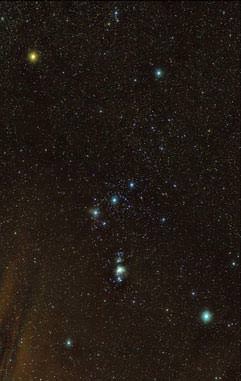
Nikon has also entered the market with its Stabil-Eyes image stabilized binocular. While the body of the instrument is similar to the Fujinon Techno Stabi, Nikon has indicated that there are differences in its stabilization technology. Although we've not had opportunity to use Stabil-Eyes binoculars, we understand they have settings for both "Land" and "Sea" (not offered with Techno Stabis) and have heard reports that they do well with hand movements and tremors. We look forward to reviewing the Stabil-Eyes.
Bushnell has introduced its StableView binocular for the image stabilizing binocular consumer to consider. Along with the other image stabilized instruments, we understand that it does a good job of making it possible to read and/or identify images at a distance that would otherwise be impossible. We look forward to reviewing the StableView.
Based on what we presently know and have heard from others, we'd prefer the Fujinon's quality for the amounts of money involved. Not only does Fujinon have high-grade optics, but the image stabilization seems to be excellent for this stage of this product's development.
As is the case with most electronics, image stabilized binoculars typically carry a manufacturer's warranty of a year. A small number of users say that the stabilization feature produces a feeling similar to motion sickness.
(You may have found this page by using a search engine to look for articles about "astrological binoculars" or "astronomical binoculars.")
What Astronomy Stories, Using Binoculars, Do You Have?
What has experience taught you that could help, inspire, or amuse someone else? What binoculars have you used and recommend (or don't recommend) to others? What have you been able to see with the binoculars you recommend? For city dwellers, how do you find dark skies? Your wisdom, tips, or advice can help others enjoy the nighttime skies, too!
Your Binocular Stories About Astronomy
Click on links below to read about the experiences of other visitors to this page.
The marvels of binoculars, and why. 




A young man when I first leaped into this delightful hobby, I began with the high-end Bausch&Lomb Zephyr 7x50s and in the inky skies of the high deserts …
Size Isn't Everything 




I began my serious interest in Astronomy in the early 90's. I purchased a 6" reflector telescope, and, only as an afterthought, bought a used 7x50 Bushnell …
Smaller exit pupils better, but vibration counteracts it to an extent Not rated yet
Most people's eye lenses are distorted enough to produce spiky-looking stars if the binocular is something like a 7x50. Stars look more pleasing with …
Home > Astronomy Binoculars

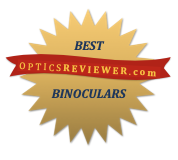
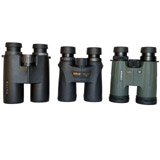 Binocular Comparisons
Binocular Comparisons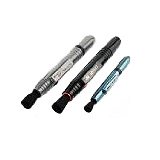 Binocular Accessories
Binocular Accessories Our Optics for Sale
Our Optics for Sale
Your Comments
This site is for you, our readers. We appreciate your comments very much.